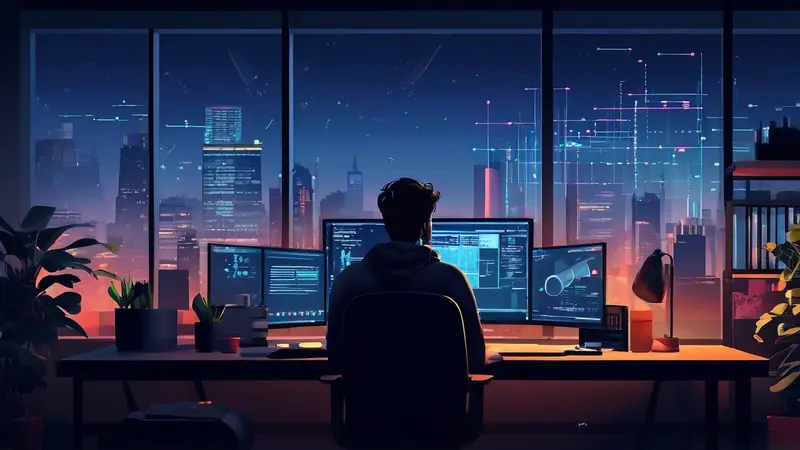The editor of Downcodes brings you a comprehensive analysis of mall system development. This article will elaborate on the six core links of mall system development: demand analysis and design, front-end development, back-end development, database design and development, system testing and optimization, and system launch and operation and maintenance. Every link is crucial and indispensable. The ultimate goal is to create an e-commerce platform with good user experience and complete functions. We will delve into the technical details and key considerations of each link to help you fully understand the entire process of mall system development.

Mall system development mainly includes the following aspects: 1. Demand analysis and design, 2. Front-end development, 3. Back-end development, 4. Database design and development, 5. System testing and optimization, 6. System launch and operation and maintenance. Among these links, demand analysis and design are the most important steps, which determine the development direction and effect of the entire project. It is necessary to fully understand and grasp the business needs of the mall, and conduct system design combined with business processes to meet user experience and business goals. .
1. Requirements analysis and design
Requirements analysis is the first step in mall system development. The development team needs to conduct in-depth communication with customers to understand their business goals, user groups, market environment, competitors and other information, and then determine the functional requirements of the system based on this information, including but Not limited to product display, search, shopping cart, order processing, payment, member management, marketing promotion, etc. In the design stage, requirements need to be transformed into specific system designs, including system architecture design, database design, interface design, etc. This is a process of transforming theory into practice, which requires professional technical knowledge and rich experience.
2. Front-end development
Front-end development mainly implements the user interface of the system, including the layout, style, interaction, etc. of the web page. The goal of front-end development is to provide an excellent user experience so that users feel convenient, fast and happy when using the system. Front-end development requires mastering technologies such as HTML, CSS, and JavaScript, as well as knowledge of user experience design and interaction design.
3. Back-end development
Back-end development mainly implements the business logic and data processing of the system, including product management, order processing, payment, membership management, marketing and promotion and other functions. Back-end development requires mastering one or more programming languages, such as Java, PHP, Python, etc., and also requires familiarity with database operations, network programming, concurrent processing and other technologies.
4. Database design and development
The database is the core of the mall system. It stores all product information, order information, user information and other data. Database design needs to consider data integrity, consistency, security and efficiency, and requires mastering database design principles and SQL language. Database development is to implement data addition, deletion, modification and query operations, which requires mastering database programming technology.
5. System testing and optimization
After the system development is completed, system testing needs to be carried out, including functional testing, performance testing, security testing, etc., to ensure the stability and availability of the system. System testing is an iterative process that requires continuous problem discovery, problem solving, and retesting. System optimization is based on testing to improve system performance by adjusting system parameters, optimizing code, and using better algorithms.
6. System launch and operation and maintenance
After the system testing and optimization are completed, the system can be put online, that is, the system is deployed into the actual operating environment for users to use. After the system is online, system operation and maintenance needs to be performed, including monitoring the system operating status, handling user feedback, backing up data, updating the system, etc., to ensure the normal operation of the system.
1. What technical capabilities are required for mall system development?
Mall system development requires technical capabilities such as front-end development, back-end development, and database design. Front-end development involves HTML, CSS, JavaScript and other technologies to implement user interface and interactive functions. Back-end development mainly involves server-side languages (such as Java, Python, etc.) and frameworks (such as Spring, Django, etc.) for processing business logic and data operations. Database design requires familiarity with relational databases (such as MySQL, Oracle, etc.) and SQL language for storing and managing data.
2. What core functions need to be considered when developing a mall system?
Mall system development needs to consider core functions such as user registration, login, product display, shopping cart, order management, and payment. User registration and login are the basis for user identity authentication. Product display needs to implement functions such as product classification, search, and detail display. The shopping cart is used to manage the products selected by users. Order management includes operations such as placing orders, canceling orders, and checking order status. Payment is an important part of completing a transaction.
3. How to improve user experience during mall system development?
In the development of mall systems, user experience can be improved in many ways. First, design a simple and intuitive user interface to reduce operating steps and redundant information and improve user efficiency. Secondly, optimize the system's response speed, reduce page loading time and data transmission time, and improve users' browsing and shopping experience. In addition, it provides personalized recommendation, evaluation and sharing functions to help users better select and share products, and increase users' sense of participation and satisfaction. Finally, resolve user feedback and problems in a timely manner, provide good after-sales service, and enhance user trust and loyalty.
I hope this detailed explanation by the editor of Downcodes can help you better understand the process and key technologies of mall system development. If you have any questions, please leave a message to discuss!